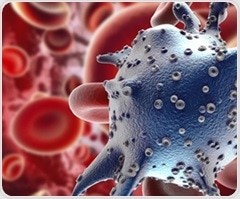
Reduction of 90% of the cases of Cervical Cancer?
Screening for HPV using HPV virus testing (DNA detection, HPV-PCR or similar) and vaccination with 9-valent HPV Vaccine (9 genotypes, Gardasil-9) can reduce the risk of cervical cancer by 90%. In the future HPV testing will replace Pap smear as a primary screening method. Evidence is building up and suggests that the detection of the HPV in the cervix has better sensitivity for the detection of cervical precancerous lesions when compared with Pap-smear. This, when applied routinely as a screening method for the general population.
Turkey is the first country in the world to replace HPV testing in place of the Pap smear, followed by the Netherlands and Australia, Austria is beginning to do so.
HPV testing, without the concurrent use of Pap smear, can reduce the occurrence of cancer of the cervix by 70% provided that such detection is accompanied by appropriate medical interventions: colposcopy, guided biopsy and adequate treatment.
In short, HPV testing only detects risk, does not establish the presence of premalignant or malignant lesions and at the expense of a lot of false positives. There is nothing like taking a good deep look at a cell sample
Now let’s take a look at the Pap smear: a single Pap smear has a detection rate for premalignant lesions of the cervix of about 51% and dismisses them with a 66.6% specificity, but maintains an accuracy of 92%. This mean that even when Pap does not detect 50% of the cases (this percentage improves with repetition of the test), when it does is because almost certainly the condition is present. In a nutshell, Pap smears establish the presence of precancerous lesions, not the risk of having them
An important element to consider: it is known that up to 50% of cases of cervical HPV do not develop cell changes and that it is likely that the woman never become aware that she had the virus at some point in her life. Pap smear will not detect these cases because there are no cellular changes to be seen and the virus will disappear from the system in a few months without leaving a trace in most of those cases. What I mean is that if we use HPV detection methods we will get a large number of false positive cases that will be evaluated without finding anything, generating anxiety and unnecessary expenses in gynecological evaluation, colposcopy and biopsy.
Which leads me to state that Pap smear has the best cost-effective profile as a screening method to detect premalignant lesions of the cervix for most of the world’s population, population that will hardly have access to the universal HPV-PCR testing as a tool for cervical cancer screening.
Good gynecological practice is not based on a screening method blindly applied. Gynecologists go beyond just taking a sample, we take a medical history, perform a thorough physical and take a good look at the cervix usually with the aid of substances like acetic acid and Lugol solution (Schiller’s test). We usually have a pretty good idea of the Pap findings even before we get the results from the lab, in fact, in many cases a biopsy is performed immediately depending on the clinical findings.
The HPV vaccine: is it necessary?
Yes, and the newer the better!
(Newer versions cover more HPV types, Gardasil-9 cover 9 genotypes)
At this point we have determined that screening and diagnostic methods save lives indirectly because they show risk or the presence of a malignant or potentially malignant lesion requiring immediate attention and referral to the specialist.
The great news about HPV vaccine, which by the way does not cause Autism, is that it prevents (up to 90%) the development of cervical cancer in the population that is fortunate to receive it. Its application does not require a specialist, anyone who is able to vaccinate, without knowing it, is putting an end to a long sequence of office visits, surgery, oncology therapy, disability and death
Great source:
Medical University of Vienna. “HPV: Vaccination and test reduce cancer risk by more than 90%.” ScienceDaily, 30 October 2017.

Blood cells at work
HPV testing, HPV-PCR: involves the detection of viral DNA by using procedures such as the PCR (Polymerase chain reaction). This test only indicates the presence of the virus, not the presence of malignant or premalignant changes in the cervix. It is not a diagnostic test.
HPV genotypes: refers to the different HPV types described. Approximately some 140 genotypes of which about 70 are medically important. Some types are associated with certain types of genital cancer, laryngeal I, anal, etc.